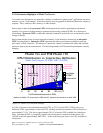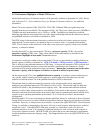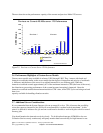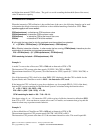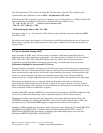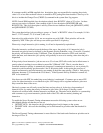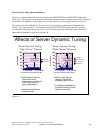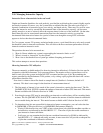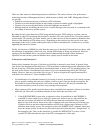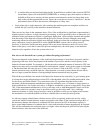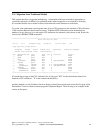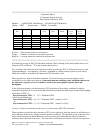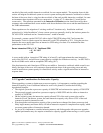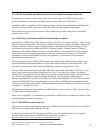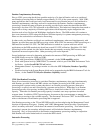There are other means for determining interactive utilization. The easiest of these is the performance
monitoring function of Management Central, which became available with V4R3. Management Central
can provide:
y Graphical, real-time monitoring of interactive CPU utilization
y Creation of an alert threshold when an alert feature is turned on and the graph is highlighted
y Creation of an reverse threshold below which the highlights are turned off
y Multiple methods of handling the alert, from a console message to the execution of a command to the
forwarding of the alert to another system.
By taking the ratio of the Interactive CPW rating and the Processor CPW rating for a system, one can
determine at what CPU percentage the threshold is reached (This ratio works for the 7xx models and the
current model 170 systems. For earlier models, refer to other sections of this document to determine what
fraction of the Interactive CPW rating to use.) Depending on the workload, an alert can be set at some
percentage of this level to send a warning that it may be time to redistribute the workload or to consider
upgrading the interactive feature.
Finally, the functions of PM400 can also show the same type of data that Collection Services shows, with
the advantage of maintaining a historical view, and the disadvantage of being only historical. However,
signing up for the PM400 service can yield a benefit in determining the trends of how interactive
capacities are used on the system and whether more capacity may be needed in the future.
Is Interactive really Interactive?
Earlier in this document, the types of jobs that are classified as interactive were listed. In general, these
jobs all have the characteristic that they have a 5250 workstation communications path somewhere within
the job. It may be a 5250 data stream that is translated into html, or sent to a PC for graphical display, but
the work on the iSeries is fundamentally the same as if it were communicating with a real 5250-type
display. However, there are cases where jobs of type “I” may be charged with a significant amount of
work that is not “interactive”. Some examples follow:
y Job initialization: If a substantial amount of processing is done by an interactive job’s initial program,
prior to actually sending and receiving a display screen as a part of the job, that processing may not
be included as a part of the interactive work on the system. However, this may be somewhat rare,
since most interactive jobs will not have long-running initial programs.
y More common will be parallel activities that are done on behalf of an interactive job but are not done
within the job. There are two database-related activities where this may be the case.
1. If the QQRYDEGREE system value is adjusted to allow for parallelism or the CHGQRYA
command is used to adjust it for a single job, queries may be run in service jobs which are not
interactive in nature, and which do not affect the total interactive utilization of the system.
However, the work done by these service jobs is charged back to the interactive job. In this case,
Collection Services and most other mechanisms will all show a higher sum of interactive CPU
utilization than actually occurs. The exception to this is the WRKSYSACT command, which may
show the current activity for the service jobs and/or the activity that they have “charged back” to
the requesting jobs. Thus, in this situation it is possible for WRKSYSACT to show a lower
system CPU utilization than the sum of the CPU consumption for all the jobs.
IBM i 6.1 Performance Capabilities Reference - January/April/October 2008
© Copyright IBM Corp. 2008 Chapter 2 - Server Performance Behavior 30



